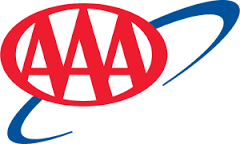 New AAA data examines ten years of fatal teen crash rates during the summer.
New AAA data examines ten years of fatal teen crash rates during the summer.
This week marks the start of the “100 Deadliest Days” for teen drivers, which is the period between Memorial Day and Labor Day when fatal crashes involving teen drivers have historically increased. Nationwide, more than 8,300 people died in crashes involving teen drivers from 2008 to 2018 during the time period, and this year, the combination of schools closed, activities curtailed, summer jobs canceled, and COVID-19 restrictions being lifted could prove an even deadlier combination.
“The crash data from the last decade are alarming, and with the combination of COVID-related factors at play this year, it’s essential for parents to talk with their teens now,” says Theresa Podguski, director of legislative affairs for AAA East Central. “Setting ground rules and modeling safe driving behaviors will go a long way towards saving lives.”
AAA’s data analysis has found that for every mile driven, new teen drivers ages 16-17 years old are three times more likely to be involved in a deadly crash compared to adults. This is largely due to their inexperience, and their likelihood of engaging in risky behaviors. According to the new AAA Foundation Traffic Safety Culture Index, about 72% of teen drivers aged 16-18 admitted to having engaged in at least one of the following risky behaviors in the past 30 days:
• Driving 10 mph over the speed limit on a residential street (47%)
• Driving 15 mph over the speed limit on a freeway (40%)
• Texting (35%)
• Red-light running (32%)
• Aggressive driving (31%)
• Drowsy driving (25%)
• Driving without a seatbelt (17%)
To keep roads safer this summer, AAA encourages parents to:
• Talk with teens early and often about abstaining from dangerous behavior behind the wheel, such as speeding, impairment and distracted driving.
• Teach by example, and minimize risky behavior when driving.
• Establish a parent-teen driving agreement that sets family rules for teen drivers.
• Conduct at least 50 hours of supervised practice driving with their teen.
To support parents in conducting practice driving sessions during COVID-19 and beyond, AAA is providing a free four-page guide to help parents coach their teens on how to drive safely. The “Coaching Your New Driver – An In-Car Guide for Parents” AAA ParentCoachingGuide 2020 offers behind-the-wheel lesson plans, including a variety of “DOs and DON’Ts” to make the learning experience as helpful as possible. For parents, the guide can be beneficial as they coach their teens on a variety of routes, building on their formal behind-the-wheel training.
TeenDriving.AAA.com has a variety of tools to help prepare parents and teens for the dangerous summer driving season. The online AAA StartSmart Parent Session also offers excellent resources for parents on how to become effective in-car coaches as well as advice on how to manage their teen’s overall driving privileges. Teens preparing for the responsibility of driving should enroll in a driver education program that teaches how to avoid driver distraction and other safety skills.
About AAA Foundation for Traffic Safety: Established in 1947 by AAA, the AAA Foundation for Traffic Safety is a not-for-profit, publicly funded, 501(c)(3) charitable research and educational organization. The AAA Foundation’s mission is to prevent traffic deaths and injuries by researching their causes and by educating the public about strategies to prevent crashes and reduce injuries when they do occur. This research is used to develop educational materials for drivers, pedestrians, bicyclists and other road users. Visit www.AAAFoundation.org.
AAA East Central is a not-for-profit association with 78 local offices in Kentucky, New York, Ohio, Pennsylvania and West Virginia serving 2.7 million members. News releases are available at news.eastcentral.aaa.com. Follow us on Twitter and Facebook.
